Prof. Ryuichi Yokoyama
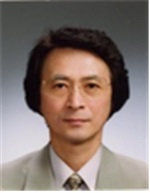
Biographical Information
Ryuichi Yokoyama received the degrees of B.S., M.S., and Ph.D. in electrical engineering from Waseda University, Tokyo, Japan, in 1968, 1970, and 1974 respectively. After working in Mitsubishi Research Institute, from 1978 through 2007, he was a professor in the Faculty of Technology of Tokyo Metropolitan University. Since 2007, he had been a professor of the Graduate School of Environment and Energy Engineering in Waseda University. His fields of interests include planning, operation, control and optimization of large-scale environment and energy systems, and economic analysis and risk management of deregulated power markets.
Now, he is a Professor Emeritus of Waseda University, a Life Fellow of IEEE, a Senior Life Member of IEE of Japan, a member of CIGRE. He is also Chairmen of Standardization Commissions of Electric Apparatus in METI Japan. He is a President of Consortium of Power System Technology of Japan and CEO of the Energy and Environment Technology Research Institute.
He will give a talk on "Resilient and Expandable Distribution Network for Smart Community in Asian Countries and Islands".
Abstract
A paradigm shift has been taking place toward reorganizing the energy management practice in Japan and many projects started to study the "Smart Grid and Smart Community" which utilize renewable energy from solar and wind sources. Due to the widespread shortage of electricity occurred by the East Japan Earthquake in March of 2011, we are keenly aware of the need for households, offices, factories, and local governments to maintain their own power sources that are not completely dependent on electric power companies. In constructing such power sources, locally generated and consumed renewable energy from solar and wind sources would be mainly utilized. However, such power sources would affect the power grid through fluctuation of power output and the deterioration of power quality. Therefore, a new social infrastructure to supply electric power would be required. As a countermeasure of the problem, it would be suitable to create resilient and expandable distribution networks that are of appropriate scale for their respective regions instead of large-scale networks all at once. The network will add new clusters when needed, and have them collaborate with each other where regional governments are the main entities. In this presentation, the current status and features of the government driven developments for smart grids and communities in Japan are introduced, and cluster-oriented expandable networks are discussed focusing on resiliency of the grid against natural disaster. Vital lifelines could be secured even during large-scale natural disasters, if such administrative agencies, hospitals, police stations, schools, evacuation centers, communication bases, and elderly housing facilities were completed centering on the Cluster-Oriented Expandable Network operated by regional governments. This concept is known as "resiliency," and it will one day be the guideline for building the social infrastructure.
Prof. Mahmoud Fotouhi Firouzabad
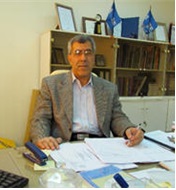
Biographical Information
Mahmoud Fotouhi Firouzabad (born 1959) is the current president of Sharif University of Technology. He graduated with honor B.Sc., M.Sc degree from Sharif University of Technology, University of Tehran respectively. Then he got an MSc and a PhD degree from the University of Saskatchewan, Canada, in 1993 and 1997 respectively. Prof. Fotouhi’s area of interest includes Power System Reliability, Smart Grid, Renewable and Distributed Energy Resources, Power System Operation.
Since 2009, he has been member of the editorial board, committee and guest editor-in-chief of some international journals, IEEE transactions, society, special issue in power and energy , reliability and smart grid area. He was also chair of key conference on power systems and smart grid, Iran. Up to now, he publishes 204 SCI journal papers, 238 conference papers and 17 discussions of journal papers. At present, he is awarded as a listed among 1% top scientists of the world as reported by Essential Science Indicators (ESI) and Web of Science Thomson Reuters ISI
He will give a talk on "Challenges of Renewable Energy Resource Integration in Power Systems".
Abstract
The penetration of renewable energy resources in power systems has been growing due to its interminable and mild environmental effects. It, however, introduces some technical and financial challengeable issues for market operators and decision makers who will have to deal with the intermittency of wind farm generations. The aim of this presentation is to present a comprehensive study on the main challenges of wind energy integration in power systems. In particular, it focuses on two challenges, i.e. the amount of reserve required for a highly wind penetrated power system and also the wind energy curtailment issues. To design the reserve policies for power systems, more conservative rules seem to be applied for wind-penetrated power systems in compare with the ones incorporating conventional units. As the share of wind energy in generation sector of power systems increases, traditional deterministic criteria becomes unable to show the required level of static reserve and more new factors need to be well involved in this procedure. On the other hand, wind farms are usually placed distant from load centers and consequently call for new transmission lines. Furthermore, during heavy loading conditions, the congestion in lines leads to wind power curtailment which can be introduced as a major cause of wind farms low capacity factor. In response, a well-organized algorithm is introduced to help power system decision makers in determining the required static reserve in highly wind-penetrated power systems. Also, some action in operation and planning studies of power systems will be introduced as a remedy to wind curtailment issues. riven developments for smart grids and communities in Japan are introduced, and cluster-oriented expandable networks are discussed focusing on resiliency of the grid against natural disaster. Vital lifelines could be secured even during large-scale natural disasters, if such administrative agencies, hospitals, police stations, schools, evacuation centers, communication bases, and elderly housing facilities were completed centering on the Cluster-Oriented Expandable Network operated by regional governments. This concept is known as "resiliency," and it will one day be the guideline for building the social infrastructure.
Pro. Kaigui Xie
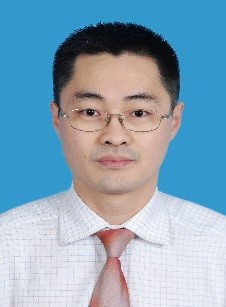
Biographical Information
Kaigui Xie received the Ph.D. degree in electrical engineering at Chongqing University, Chongqing, China, in 2001. Currently, he is a full professor and vice dean of the school of electrical engineering, Chongqing University, China. His research expertise and interests mainly focus on the areas of power system reliability, power system planning and probabilistic methods applied to power systems.
He was the team leader of five research projects under the National Natural Science Foundation of China and three other national level research projects respectively under the National High Technology Research Program of China, the National Basic Research Program of China, and the National Key Technology Development Program of China. He has the title of Youth Science and Technology Innovation Leader in China, is an IEEE senior member and an IET Fellow. He serves on an editor of IEEE Transactions on Power Systems, an associate editor of IET Proceedings-Generation, Transmission and Distribution, and the Editorial Board of Electric Power Components and Systems (EPCS). He is a member of the International Technical Advisory Committee of the 12th conference on PMAPS 2014, and the Technical Program Chair of the 13th conference on PMAPS 2016. He is also a member of Reliability Committee of Chinese Society for Electrical Engineering, and Reliability Management Committee of China Electrical Power Industry.
He has received seven awards from provincial level authorities in China and holds over 10 invention patents. He has published 5 books, and more than 200 papers. He has developed four reliability evaluation software products. His research results have been widely and practically applied to many engineering projects in China, such as Three-Gorge hydro power plant and power grid, and Yun-Guang Extra HVDC Transmission system.
He will give a talk on " Micro Grid Reliability Evaluation ".
Abstract
Development of micro-grids (MGs) is a popular way to utilize renewable energies (REs) such as wind and solar. However, these sources are highly variable and intermittent, which usually leads to complex operation models and control strategies. Therefore, a new reliability evaluation model for MGs considering these features and control strategies is helpful in the operation and planning of MGs.This presentation presents a reliability evaluation technique for MG. Generally, a MG has different types of generating sources, such as diesel generators, wind turbine generators and PVs. Based on generation output features and control strategy, generating sources can be classified as stable power (SP) sources, such as diesel generators, and unstable power (UP) sources, such as wind power and solar power. A reliability evaluation technique for MGs is developed considering storage system strategies, generating source control modes, network structure and the impacts of outer distribution system on the MG reliability performance. An MG is used as an example for case studies.
Dr. Sungnam Chun
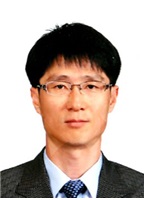
Biographical Information
Sungnam Chun received his B.S., M.S. and Ph.D. degree from Pusan National University, Korea in 1998, 1990 and 1998, respectively. His major is environmental engineering and he studied air pollution control technologies during the graduate school years and submitted a dissertation on "Vertical dispersion of plumes emitted into the convective boundary layer".
He has worked for the Korea Electric power Corporation Research Institute(KEPCO-RI) since 1995. He participated in some important projects in field of pollution control technologies for fossil-fuel power plants like as "Development and commercialization of KEPCO Flue Gas Desulfurization(KEPAR FGD) system" and "Optimization of selective catalytic reduction(SCR) system for NOx control from oil fired power plants" etc.
Dr. Chun is interest in development of air pollution control technologies for power plants, assessment of environmental impacts and finding of mitigation measures to reduce the pollution near power plants. Now a day his researches are focused on assessment of fine particle emission characteristics from power plants and their behavior in the atmosphere.
In this symposium he will give a talk on "Fine particle emission characteristics from coal fired power plants and their mitigation strategy".
Abstract
Now a day, one of the important environmental issues in Korea is the fine particles in the atmosphere. Fine particles are known as an pollutant more harmful than coarse one to human health. Even though most of fossil fuel firing power plants in Korea has the high performance pollution control facilities like as SCR for NOx, Electrostatic precipitator(ESP) for dust and FGD for SOx, power plants are considered as one of the main source of the fine particles and precursors which are emitted from stack in gas phase and converted to fine particles in the atmosphere through the chemical and photochemical reactions. In this talk, I summarized the recent environmental policies which are related with electric power industry and presented the results of the fine particle emission characteristics assessed in 500MW coal fired power plants. Also I suggested the applicable control measures. These works will provide some informations to understand the fine particle problems and to fine the solutions to improve the air quality in Korea.
Prof. Wooyoung Jeon
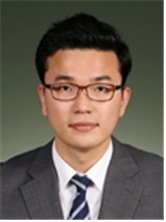
Biographical Information
Wooyoung Jeon acquired his bachelor degree in Industrial Engineering from KAIST in 2007 and received a master degree in Financial Engineering and doctoral degree in Applied Economics both from Cornell University in 2009 and 2014, respectively. He worked at Korea Energy Economics Institute in the Renewable Energy Research Division, and currently holds a position of an assistant professor in the Department of Economics at Chonnam National University. Professor Jeon's area of research interest mainly includes Energy Economics and Environmental Economics.
He is currently conducting research regarding the various benefits and costs of adopting renewable energy sources into the electricity system, the impact of supply-side energy storage and demand-side energy storage in increasing the efficiency of electricity system, the economic and environmental impact of electric vehicles, and the price scheme that give the correct incentives to customers to make the affordable and sustainable Smart Grid.
He will give a talk on "Building a Sustainable and Affordable Smart Grid: The Impact of ESS".
Abstract
Increasing social pressure on reduction in carbon emission and harmful particulate matters demands radical decrease of the use of fossil fuel in electricity sector. However, nuclear generation which induces high costs on waste disposal, social conflict and potential risk as observed in Fukushima accident cannot be the sustainable solution, so for this reason, renewable energy sources mainly by solar and wind are considered as a major alternative to fossil-fuel generation and they are rapidly being deployed globally. However, the high variability and uncertainty that wind and solar energy inherently have can aggravate the reliability of electricity system, hence the energy storage system(ESS) that can effectively mitigate the variability of renewable sources draws a lot of attention. This study analyzes the true economic value of ESS by estimating how much ESS can contribute to reduce the system cost of operating electricity system with high penetration of wind generation. This study uses the Jeju power system as a test system and applied stochastic form of security-constraint optimal power flow to analyze the impact of high wind generation and ESS. The results show that the economic value of ESS comes from 1) generation cost saving by price arbitrage 2) reserve cost saving by reducing high wind variability 3) capacity cost saving by lowering peak demand to meet system adequacy. By this, this paper showed that the conventional measure for the value of ESS which is mainly based on price arbitrage is seriously underevaluate the true contribution that ESS makes in the electricity system, and when all benefit that ESS brings to the system is correctly considered, the value of ESS already exceeds its cost. In addition, the study shows that ESS is more beneficial when it is coupled with high wind generation than low wind generation.












